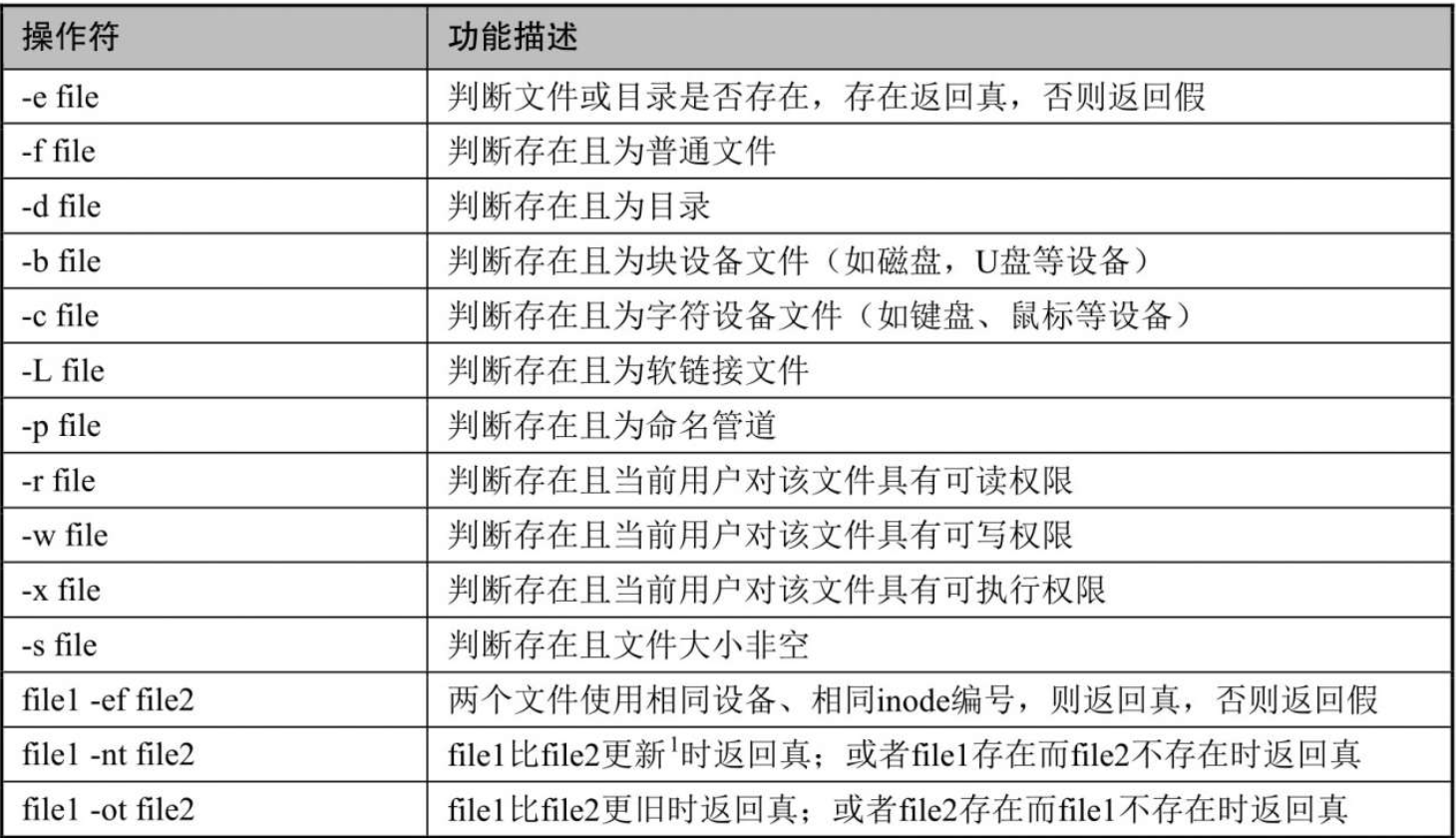Linux之file
1.file
Linux file命令用于辨识文件类型和一些编码格式。通过查看文件的头部信息来获取文件类型,而不是像Windows通过扩展名来确定文件类型的。
2.file 语法
file [-bcLvz][-f <名称文件>][-m <魔法数字文件>...][文件或目录...]
3.file 参数
-b 列出辨识结果时,不显示文件名称。 -c 详细显示指令执行过程,便于排错或分析程序执行的情形。 -f<名称文件> 指定名称文件,其内容有一个或多个文件名称时,让file依序辨识这些文件,格式为每列一个文件名称。 -L 直接显示符号连接所指向的文件的类别。 -m<魔法数字文件> 指定魔法数字文件。 -v 显示版本信息。 -z 尝试去解读压缩文件的内容。
-i 输出mime的字符串 [文件或目录...] 要确定类型的文件列表,多个文件之间使用空格分开,可以使用shell通配符匹配多个文件。
4. file 实例
4.1 b 示例
[root@VM-4-13-centos shell]# ll 总用量 20 drwxr-xr-x 2 root root 4096 9月 27 11:01 awk -rwxr-xr-x 1 root root 84 9月 28 10:36 file.sh -rwxr-xr-x 1 root root 99 9月 27 11:24 readarray.sh drwxr-xr-x 2 root root 4096 9月 28 08:36 sed -rw-r--r-- 1 root root 8 9月 28 10:05 test.txt [root@VM-4-13-centos shell]# file -b file.sh Bourne-Again shell script, ASCII text executable
4.2 i 示例
[root@VM-4-13-centos shell]# file -i file.sh file.sh: text/x-shellscript; charset=us-ascii
5.文件属性判断

5.1 -e file 判断文件或者目录是否存在,存在返回true,否则返回false。
[root@VM-4-13-centos shell]# ls awk file.sh readarray.sh sed test.txt [root@VM-4-13-centos shell]# [ -e /home/shell/file.sh ] && echo true || echo false true
5.2 -f file 判断文件存在且是普通文件
[root@VM-4-13-centos shell]# [ -f /home/shell/file.sh ] && echo true || echo false true [root@VM-4-13-centos shell]# [ -f /home/shell/file.sh1 ] && echo true || echo false false [root@VM-4-13-centos shell]#
5.3 -d file 判断目录是否存在。
[root@VM-4-13-centos shell]# [ -d /home/shell/file.sh1 ] && echo true || echo false false [root@VM-4-13-centos shell]# [ -d /home/shell ] && echo true || echo false true






【推荐】国内首个AI IDE,深度理解中文开发场景,立即下载体验Trae
【推荐】编程新体验,更懂你的AI,立即体验豆包MarsCode编程助手
【推荐】抖音旗下AI助手豆包,你的智能百科全书,全免费不限次数
【推荐】轻量又高性能的 SSH 工具 IShell:AI 加持,快人一步
· winform 绘制太阳,地球,月球 运作规律
· 超详细:普通电脑也行Windows部署deepseek R1训练数据并当服务器共享给他人
· 上周热点回顾(3.3-3.9)
· AI 智能体引爆开源社区「GitHub 热点速览」
· 写一个简单的SQL生成工具